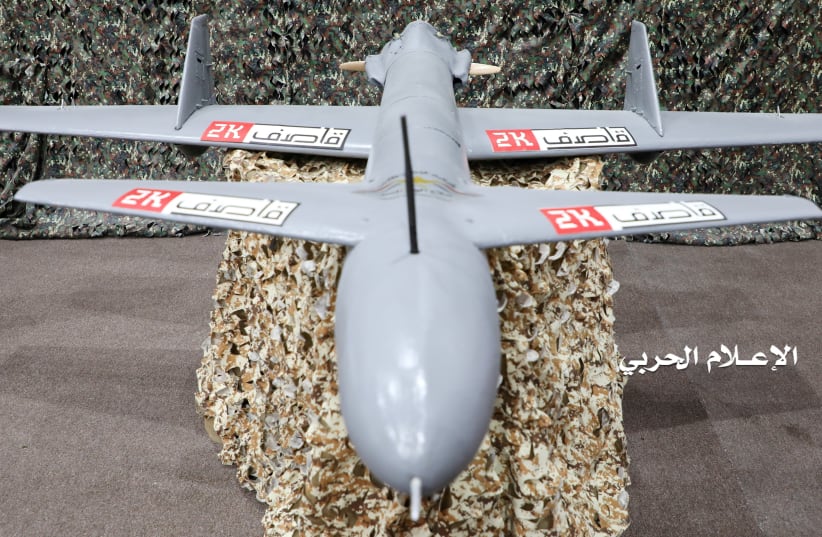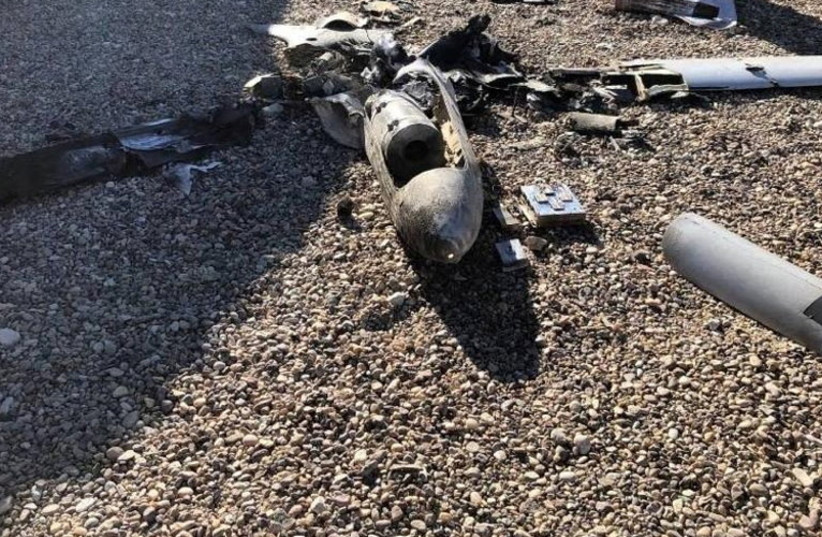Three Iraqi civilians were injured in an explosive drone attack in northern Iraq at around 9:30 on Wednesday night. The location is important: the incident occurred near Erbil, on what is known as the Pirmam Road in Shawes. This area connects the Kurdistan Region of Iraq’s capital to the city of Shaqlawa. It is also near where a new US Consulate is being built.
The full details of the attack are not yet clear, but it is significant in the larger context of Iran and its proxies using drones to strike at US targets, including its partners and allies in the region.
This includes drone threats against Israel, Saudi Arabia, the United Arab Emirates, Iraq’s Kurdistan Region and others.
Why now? The larger global context
The latest incident comes as the International Atomic Energy Agency Board of Governors voted to adopt a resolution calling on Iran to provide information about its undeclared nuclear sites.
It also comes in the wake of Iran’s seizure of two Greek ships in the Gulf as “punitive actions,” in response to the confiscation of Iranian oil by the United States the previous day, only heightening the tensions.
Additionally, on May 30, pro-Iranian militias targeted US forces at Al Asad Airbase in Iraq. Iranian reports at the time claimed it was carried out specifically near the designated area of the new US Consulate.
Location, location, location
The road from Erbil to Shaqlawa, where the attack took place, is often crowded at night. In the heat of the summer, many people in Erbil stay up late and tend to go out for late tea, food, or to smoking lounges.
Erbil is a successful and secure city, and Iran and its proxies have tried to damage its security in the past. Drones are one sure method for doing so, because the city has no real defenses against them.
Who uses drones and why?
Iran has, in recent years, moved drone technology to its proxies in Iraq, as well as flooded the region with armed drones.
Hezbollah has thousands of drones, some of them likely capable of carrying a munition and acting as a kamikaze weapon. The Houthis in Yemen use drones against Saudi Arabia all the time.
Iran is pioneering drone warfare
The Islamic Republic used drones and cruise missiles in September 2019 against Abqaiq, a Saudi Aramco gated community that holds oil-processing facilities in eastern Saudi Arabia.
IT USED drones against Israel in February 2018, and then again in May 2021, when it launched one from Iraq. Just this year, Tehran tried to fly drones over Iraq toward Israel, however, the US-led coalition shot them down. Israel also used F-35s to down Iranian drones last year.
Iran and its militias field the drones, which can be flown from almost anywhere because they are not very large, and can be launched from a catapult or a truck. Iran usually supplies a mix of drones and 107mm and 122mm rockets to its militias. It also uses ballistic missiles with increasing precision. For instance, Iran targeted the Asad base in January 2020 after the US killed IRGC Quds Force commander Qasem Soleimani.
Tension in Kurdish territory
In recent years, Iran has rapidly increased its attacks on Erbil.
The US has moved forces out of most facilities in Iraq, such as Taji, and concentrated them around the Kurdistan Region’s capital. So Iran now sees Erbil as the headquarters of not only the US presence, but also an Israeli one.
This was a key feature of Iran’s March attack on an area outside the region’s most populous city that damaged a large home. This happened again when an Iranian drone targeted a hangar at Erbil International Airport in April 2021. US media said the hangar was used by the CIA. This means Iran has the intelligence and is sending messages using its drones and rockets.
Rockets have also recently targeted a Turkish base near Bashiqa and the Kalak oil refinery.
Thus, Iran is saying it can strike Turkish forces, the US, and Kurdish authorities if it wants. It even sent drones to its militia allies in Iraq to target Prime Minister Mustafa Kadhimi. Iran sees no red lines these days against using drones.
In response, Israel has upped the rhetoric on Iran’s drone threats, including in a speech by Defense Minister Benny Gantz, in which he said that Iran was trying to complete the production and installation of 1,000 advanced IR6 centrifuges, including at a new underground facility being built near Natanz. He also noted that the belligerent regime supplies Venezuela with drones, and that it has also set up a drone factory in Tajikistan.
In recent weeks, there have been reports that key members of Tehran’s drone program might have been targeted in Iran, and that a drone targeted a facility in Parchin. This means that Iran is concerned about drone threats.
Iran uses drones and rockets largely because of plausible deniability. It can easily move the pieces to groups in Iraq, Syria, Lebanon and Yemen. Then the groups can fly the systems, and Iran can pretend it had nothing to do with the attacks. The recent incident appears to have harmed civilians, leaving questions about what has actually occurred.

